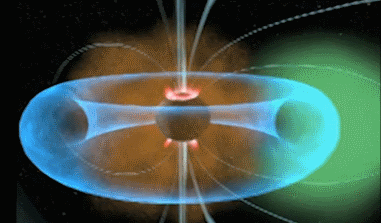23 Jul 2013
Global Navigation Satellite Systems (GNSS) are now routinely used for high accuracy operations around the globe. But the signals we rely on are vulnerable to ionospheric perturbations – fluctuations in the upper atmosphere - the ionosphere - driven by solar activity.
That solar activity is about to reach another peak - when the sun will be at the strongest part of its 11 year cycle.
The University of Nottingham is leading a £700,000 project, funded under the FP7 programme by the European Commission and the European GNSS Agency (GSA), to develop mathematical models which will change the way GNSS based techniques work and continuously deliver accurate position output during periods of intense solar activity.
Led by Dr Marcio Aquino, in the Faculty of Engineering, the aim of CALIBRA – Countering GNSS high Accuracy applications Limitations due to Ionospheric disturbances in Brazil – is to establish a blueprint for operations requiring accuracy better than 10cm.
Dr Aquino said: “Why Brazil? Brazil sits in one of the most affected regions of the Earth for ionospheric perturbations. Its geographical location across the magnetic equator makes it the perfect test-bed for worst case scenarios. Brazil is also a prominent market for GNNS based high accuracy techniques and this project will help the evolution of this market.”
Civil aviation, offshore drilling and agriculture are among the industries that have come to exploit the pinpoint accuracy provided by GNSS. Satellite navigation is making a significant impact in support of operations where high positioning accuracy is required, as in precision agriculture, where the meticulous application of pesticides and fertilizers translates into efficiency gain and profit. GNSS is also used for surveying, geodesy, land management and construction, among many other activities.
Techniques such as the so-called RTK (Real Time Kinematic), WARTK (Wide Area RTK) and PPP (Precise Point Positioning) rely on the precision of the GNSS signals carrier waves - these are especially sensitive to ionospheric perturbations, in particular scintillation phenomena and sudden variations in the ionosphere Total Electron Content (TEC), which are latitude and solar cycle dependent.
Dr Aquino said: “Even before the rise of the solar cycle problems with GNSS carrier waves based techniques impeded the levels of availability and accuracy expected by industry. A risk exists that the impact of high solar activity leads not only to disruption but even to disbelief at the ability of GNSS to support such applications. The technical challenges posed by this issue are crucial to the establishment of the new European GNSS Galileo.”
CALIBRA aims to develop algorithms which can be applied to the highly precise GNSS carrier phase based techniques and implemented in GNSS receivers in order to counter adverse ionospheric effects. It will identify how existing algorithms are degraded by ionosphere related phenomena, evaluating impact on RTK, WARTK and PPP techniques in terms of accuracy, integrity and availability. It will then develop suitable countermeasures based on experimental evidence.
This will be possible due to the expertise gathered by the partners in this field, their participation on related ongoing projects such as TRANSMIT (www.transmit-ionosphere.net) and on the use of data from established networks in Brazil.
This research is being carried out in collaboration with Septentrio Satellite Navigation, São Paulo State University, ConsultGEL, Istituto Nazionale di Geofisica e Vulcanologia and the University of Nova Gorica.
The University of Nottinghamhas 42,000 students at award-winning campuses in the United Kingdom, China and Malaysia. It was ‘one of the first to embrace a truly international approach to higher education’, according to the Sunday Times University Guide 2013. It is also one of the most popular universities among graduate employers, one of the world’s greenest universities, and winner of the Times Higher Education Award for ‘Outstanding Contribution to Sustainable Development’. It is ranked in the UK's Top 10 and the World's Top 75 universities by the Shanghai Jiao Tong and the QS World Rankings.















